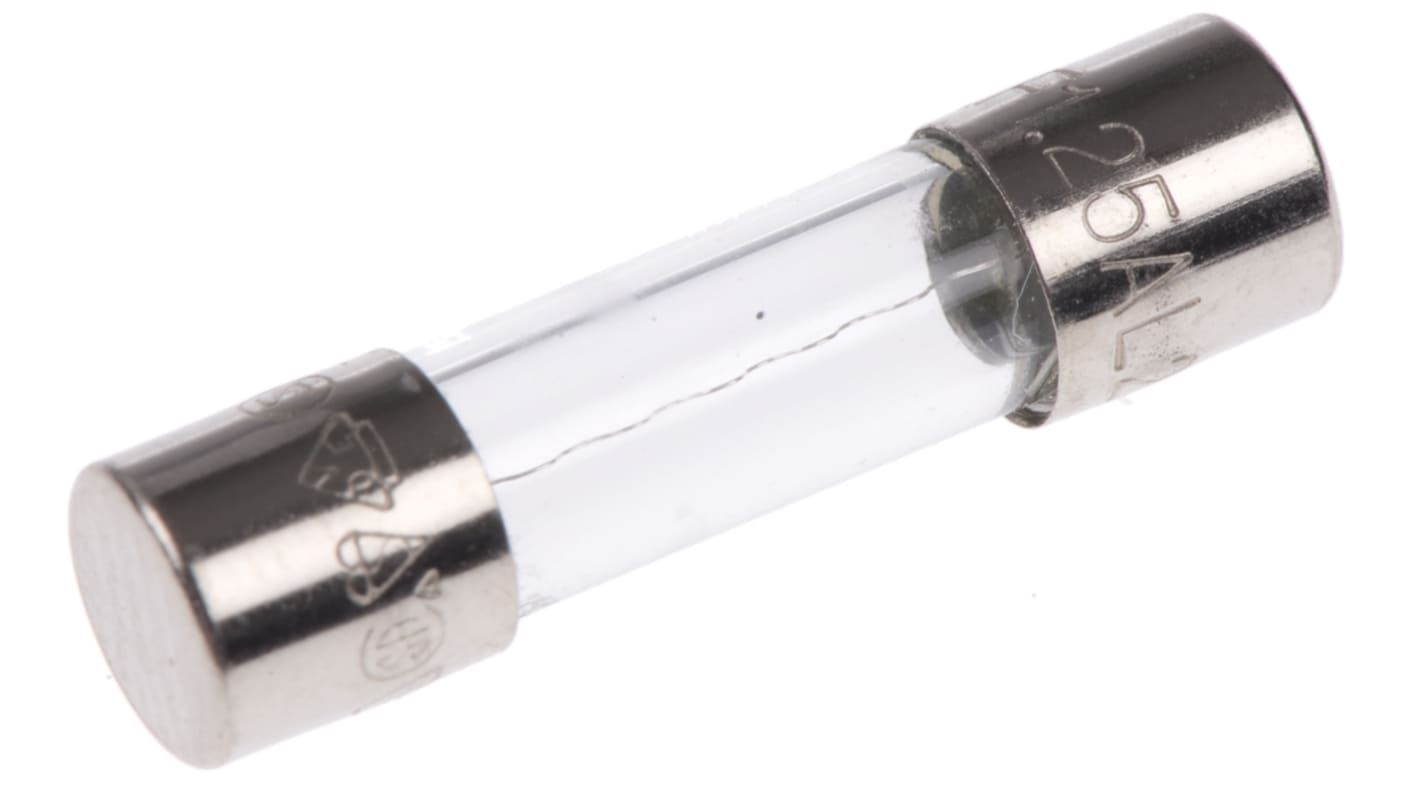Littelfuse 1.25A F Glass Cartridge Fuse, 5 x 20mm
- RS Stock No.:
- 541-4397
- Mfr. Part No.:
- 02171.25MXP
- Brand:
- Littelfuse

Bulk discount available
Subtotal (1 pack of 10 units)*
£3.38
(exc. VAT)
£4.06
(inc. VAT)
FREE delivery for orders over £50.00
In Stock
- 160 unit(s) ready to ship
- Plus 20 unit(s) ready to ship from another location
- Plus 480 unit(s) shipping from 21 November 2025
Need more? Click ‘Check delivery dates’ to find extra stock and lead times.
Units | Per unit | Per Pack* |
|---|---|---|
| 10 - 90 | £0.338 | £3.38 |
| 100 - 490 | £0.27 | £2.70 |
| 500 - 990 | £0.207 | £2.07 |
| 1000 + | £0.181 | £1.81 |
*price indicative
- RS Stock No.:
- 541-4397
- Mfr. Part No.:
- 02171.25MXP
- Brand:
- Littelfuse
Specifications
Technical Reference
Legislation and Compliance
Product Details
Find similar products by selecting one or more attributes.
Select all | Attribute | Value |
|---|---|---|
| Brand | Littelfuse | |
| Current Rating | 1.25A | |
| Fuse Size | 5 x 20mm | |
| Fuse Speed | F | |
| Voltage Rating | 250V ac | |
| Body Material | Glass | |
| Series | 217 | |
| Select all | ||
|---|---|---|
Brand Littelfuse | ||
Current Rating 1.25A | ||
Fuse Size 5 x 20mm | ||
Fuse Speed F | ||
Voltage Rating 250V ac | ||
Body Material Glass | ||
Series 217 | ||
This cartridge fuse is designed to International (IEC) Standards for use globally. It is available in cartridge and axial lead form. They are ideal for providing protection to devices or internal circuits.
Features:
• Glass Fuse (glass body, nickel plated brass cap)
• 5 x 20 mm cartridge size
• F Speed Rating
• RoHS compliant and lead-free
More information:
Why choose a glass fuse?
Glass and ceramic fuses have similar properties. Glass fuse is great for small items that don't draw a heavy amount of current and blow on a regular basis. It is easy to identify whether the fuse has blown as you can see inside it.
What size is it?
5x20 mm is a standard cartridge size and it measures approximately 20 mm long by 5 mm in diameter. They are popular in board and panel protection and will fit a compatible 5x20 fuse holder.
What Speed is it?
This particular fuse is ''F'' speed rated which means a fast acting fuse. These are designed to protect less sensitive components and are also used to protect cabling from melting or catching fire when an overload appear. Every fast acting fuse will have the exact speed stated which will be relevant to different overloads.
What are fuses used for?
• For the protection of components and equipment from costly damage caused by over-current.
• To isolate sub-systems from the main system once a fault has appeared
What is an over-current?
It is a setting where a circuit experiences a current that is higher than the normal operating current.
• Glass Fuse (glass body, nickel plated brass cap)
• 5 x 20 mm cartridge size
• F Speed Rating
• RoHS compliant and lead-free
More information:
Why choose a glass fuse?
Glass and ceramic fuses have similar properties. Glass fuse is great for small items that don't draw a heavy amount of current and blow on a regular basis. It is easy to identify whether the fuse has blown as you can see inside it.
What size is it?
5x20 mm is a standard cartridge size and it measures approximately 20 mm long by 5 mm in diameter. They are popular in board and panel protection and will fit a compatible 5x20 fuse holder.
What Speed is it?
This particular fuse is ''F'' speed rated which means a fast acting fuse. These are designed to protect less sensitive components and are also used to protect cabling from melting or catching fire when an overload appear. Every fast acting fuse will have the exact speed stated which will be relevant to different overloads.
What are fuses used for?
• For the protection of components and equipment from costly damage caused by over-current.
• To isolate sub-systems from the main system once a fault has appeared
What is an over-current?
It is a setting where a circuit experiences a current that is higher than the normal operating current.
Related links
- Littelfuse 1.25A F Glass Cartridge Fuse, 5 x 20mm
- Schurter 1.25A F Glass Cartridge Fuse, 5 x 20mm
- Mersen 1.25A F Glass Cartridge Fuse, 5 x 20mm
- RS PRO 1.25A F Glass Cartridge Fuse, 5 x 20mm
- Eaton 1.25A F Glass Cartridge Fuse, 5 x 20mm
- Littelfuse 1.25A T Glass Cartridge Fuse, 5 x 20mm
- Littelfuse 630mA F Glass Cartridge Fuse, 5 x 20mm
- Littelfuse 400mA F Glass Cartridge Fuse, 5 x 20mm
